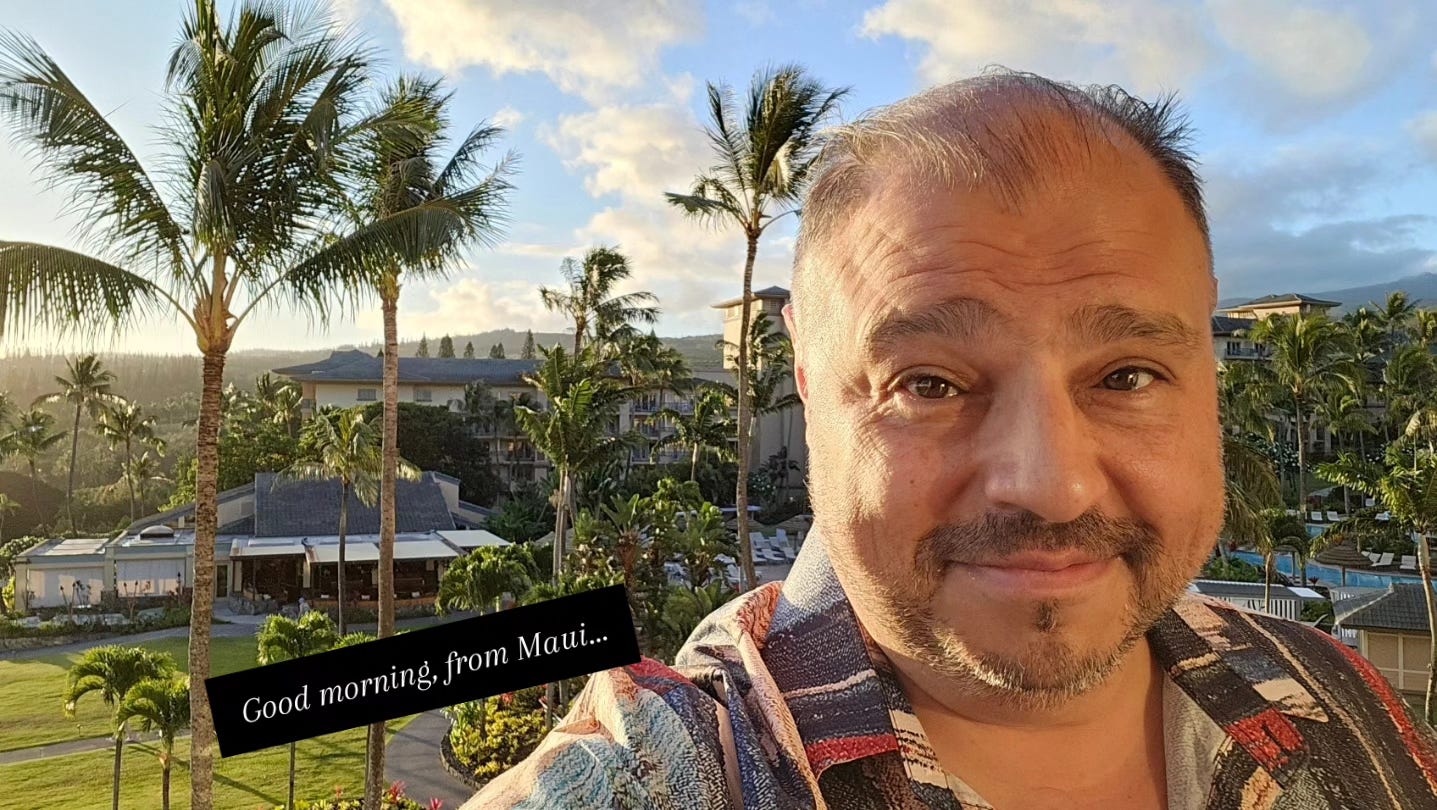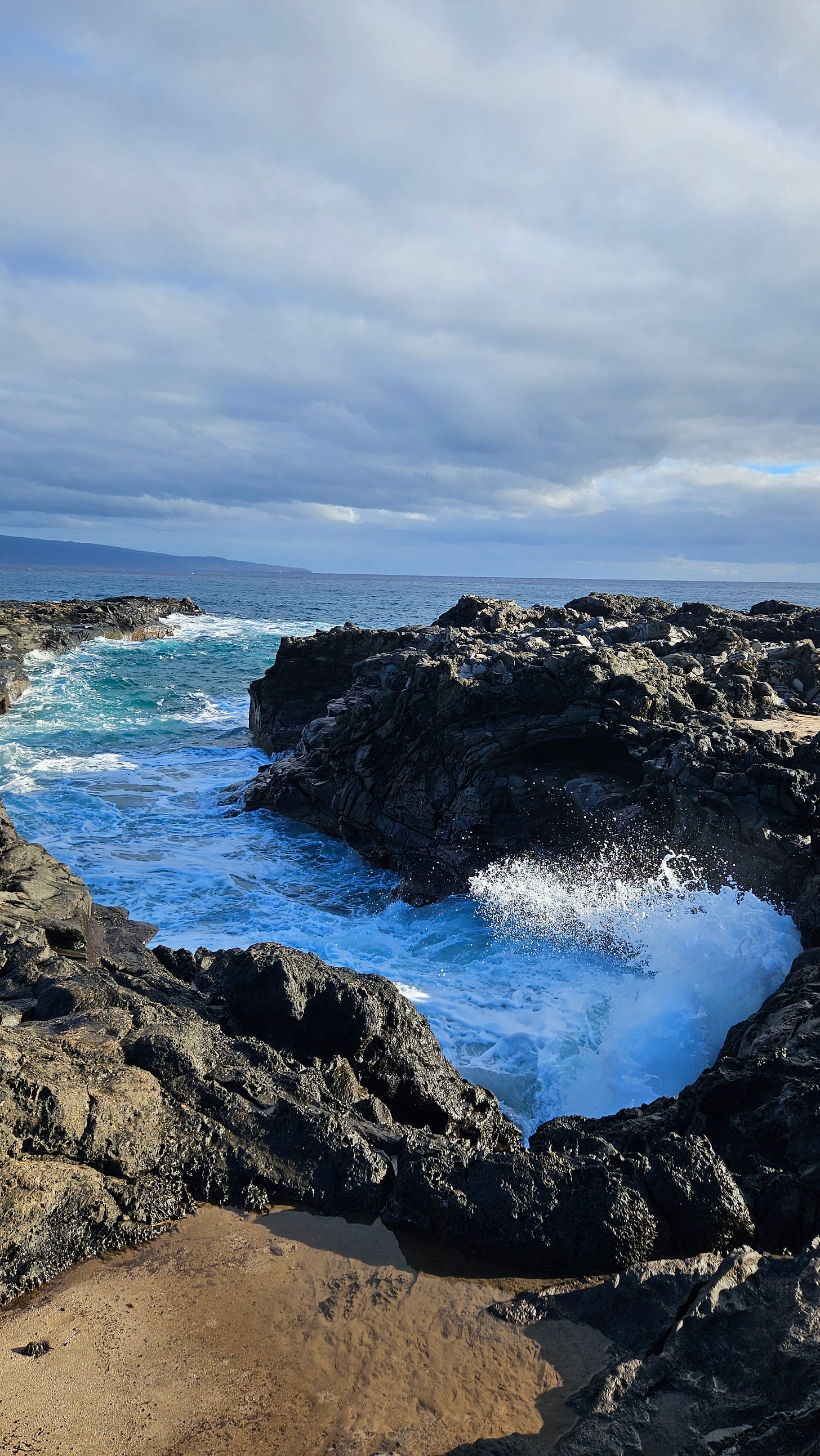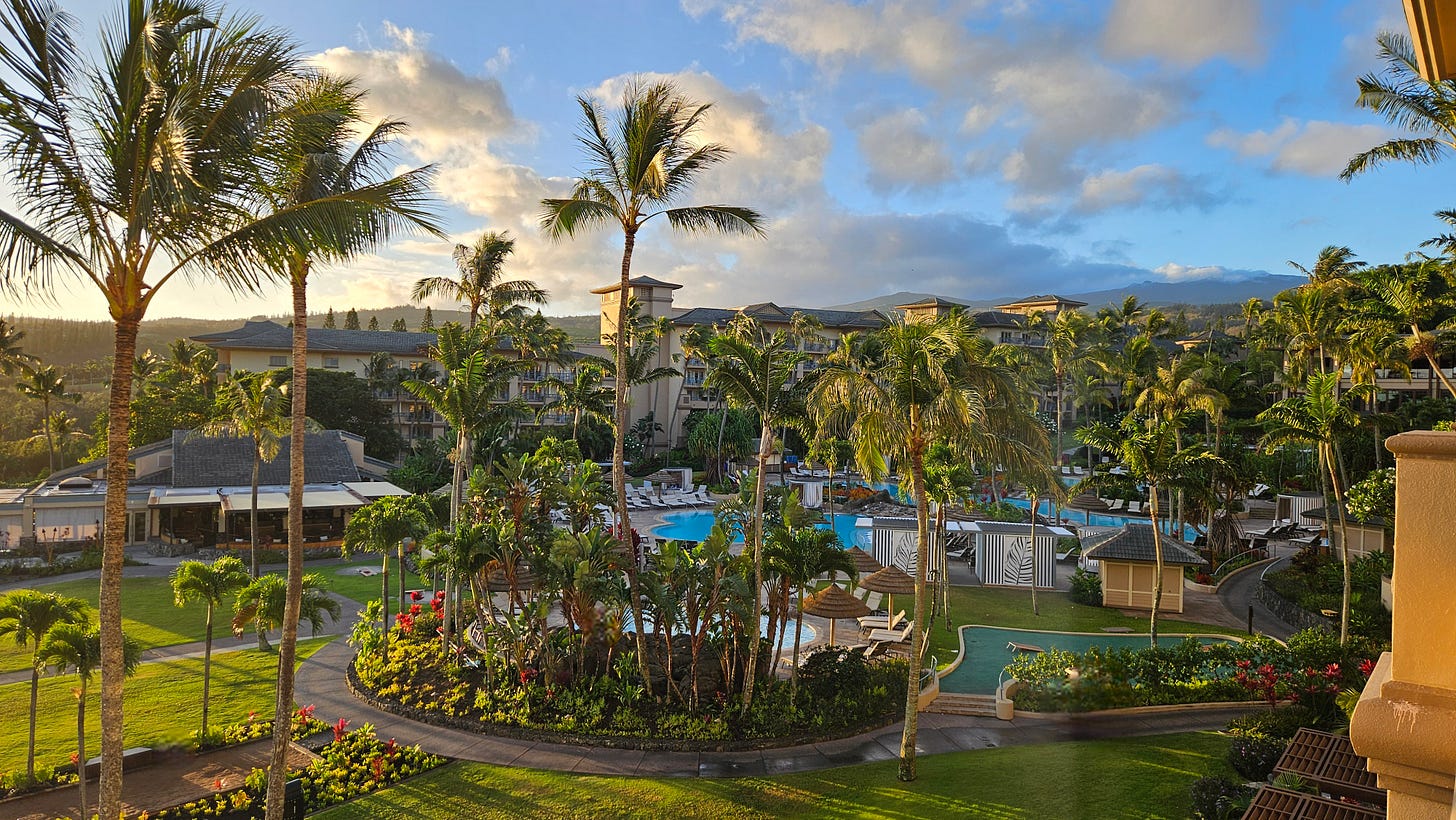Aloha from Maui! My fiancée, my future stepdaughter—the newly minted UCLA Bruin—and I are here, basking in sunshine, sipping cocktails, and trying to immortalize this trip before credit card alerts ruin the vibe. But between the luxury and leis, there’s a shadow that we simply can’t ignore: the memory of the Lahaina fires, and how their aftermath is still shaping life here.
🔥 The Fire That Changed Everything
August 8–16, 2023 carved its date into Maui’s soul. Lahaina lost at least 102 lives, over 2,200 buildings, and tens of thousands of trees. The cost? A jaw‑dropping $5.5 billion worth of damage . Devastating doesn’t begin to cover it.
The fires weren’t just environmental disasters—they were cultural tragedies. Places like Waiola Church and the Nā Aikāne Cultural Center—pillars of Native Hawaiian life—were destroyed . On top of that, persistent land‑grab rumors emerged—sensationalist conspiracy fodder, but grounded in real historical mistrust over land rights and colonialism .
The Lahaina fires were determined to be accidental, sparked by power infrastructure failures under extreme weather stress. Here’s a refined breakdown:
🔌 What Ignited the Blaze?
Downed power lines: In the early hours of August 8, a utility pole (Pole 25) in dry grass was knocked down during strong, persistent winds—likely linked to distant Hurricane Dora and a prolonged drought .
Re-energized spark: The fallen line briefly ignited a small fire around 6:35 a.m. The line was later re-energized, which caused arcing that scattered molten sparks into overgrown brush below—igniting another fire in the same area .
Rekindled catastrophe: Fire crews believed the morning fire was extinguished. But at 2:52 p.m., powerful winds fanned embers in a nearby gully, tearing the fire back to life. Flames then surged toward Lahaina, fueled by dry vegetation and relentless winds .
🏛 Accountability & Aftermath
The ATF, Hawai‘i AG, and Maui Fire Department concluded the ignition was accidental—but emphasized systemic failures .
Lawsuits have been filed against Hawaiian Electric and government bodies for failing to shut off power despite red-flag warnings—a lawsuit Maui County joined in August 2023 .
A $4 billion settlement has been proposed but is still held up in court, pending decisions on insurance and utility liability .
This isn’t just a story for headlines—it's a somber lesson on how infrastructure and preparedness must keep pace with climate reality.
What’s Actually Being Done
I did some reading and here's what I found:
Community healing: On August 8, 2025, Maui will mark two years since the fires with gatherings—a paddle-out, memorials, and more .
Cultural rebuilding: Groups like Maui Cultural Lands and the Lahaina Community Land Trust are planting native trees, buying land back into Hawaiian control, and revitalizing place-based stewardship .
Local housing solutions: The Council for Native Hawaiian Advancement funded families hosting displaced survivors with up to $2,000/month until Nov 2024, working to prevent community fragmentation .
Ongoing recovery issues: Studies show encouraging recovery signs—but serious challenges remain: housing scarcity, mental-health strain, and medical access remain hurdles for survivors .
This trip isn’t just about celebrating UCLA admission (though props to her—we’re proud). It’s about stepping onto land that’s healing, and realizing that our joy here carries responsibility. When we sip that $27 smoothie, we’re reminded: contributors to tourism can also support recovery.
🏝 Intermission: The Ritz-Carlton, Where Wallets Go to Die Beautifully
Now, let’s take a brief, sun-dappled detour from the ash and embers and talk about where we’re staying: the Ritz-Carlton Kapalua, otherwise known as “The Four Seasons' glossier cousin who charges you extra for breathing near the koi pond.”
It is lovely. Lush. Immaculate. Every hibiscus seems hand-fluffed. The air smells faintly of eucalyptus, mango, and quiet judgment. The staff greet you like you’re royalty, and by the time you realize you’re not, you’ve already been charged $47 for sparkling water.
Yesterday we had three hamburgers, some fries, a lemonade, and what I believe was a glass of ancestral rainwater purified by monks. The bill? $110—before tip. That’s not a typo. That’s lunch. For three. At this rate, by Friday we’ll be splitting a granola bar and bartering beach towels for protein.
I asked the waiter if the fries were truffle-infused. He said, “No sir, just regular fries... but the view is priceless.” Which is exactly what someone says right before they bring you the bill for the view.
So yes, the resort is stunning. The sunsets make you weep. The beds feel like sleeping on marshmallows made of moonlight. And by the end of the trip, we may be auctioning off my stepdaughter’s UC acceptance letter to pay for room service.
But hey—you only celebrate getting into UCLA once, right?
Maybe twice, if they open a payment plan for the next breakfast.
Addendum: Conspiracies, Curiosity, and Critical Thinking
No conversation about the Lahaina fires seems complete without wading—cautiously—into the pool of conspiracy theories. And by “pool,” I mean a lava-heated hot tub bubbling with space lasers, billionaire land grabs, and the secret plan to make Maui the world’s first AI-powered smart island (presumably run by Alexa in a grass skirt).
Let’s unpack.
🔵 The Theories
Directed Energy Weapons (DEWs): Some claimed that high-powered energy beams from satellites started the fires. Why? Allegedly to clear land for government or corporate interests.
Oprah and Bezos Land Grabs: Viral posts suggested celebrities were behind the fires to scoop up land in Lahaina—never mind that Oprah owns land far from the burn zones and actually donated to relief efforts.
Smart City Takeover: Others pointed to long-term planning documents for resilient infrastructure—twisting them into signs of a nefarious scheme to digitize the island and displace locals.
🔍 The Facts
No evidence supports DEWs or coordinated burn-for-profit campaigns. Multiple investigations—including by the Hawai‘i AG’s office and local fire officials—point to downed power lines, hurricane-level winds, and tragically dry vegetation.
The land grab fear isn’t new—it’s rooted in real history of displacement and broken trust. That doesn’t make every theory valid, but it explains why skepticism thrives, especially when survivors feel ignored by institutions.
⚖️ The Takeaway
Most conspiracy theories about the Maui fires collapse under scrutiny—but that doesn’t mean the anxieties behind them should be dismissed. They’re emotional flare-ups in a climate of trauma, fueled by centuries of colonialism and present-day land insecurity. The better question might be: What systems allowed these fears to feel plausible in the first place?
So no, space lasers didn’t torch Lahaina. But yes, Maui deserves transparency, accountability, and compassion—not gaslighting. And maybe fewer influencers using disaster zones as selfie backdrops.
End transmission. Alexa, play “Somewhere Over the Rainbow”—but make it haunted.




